Iceland: How much things cost & how to visit on a low budget
Since its currency crash in 2008, Iceland had gone from absurdly expensive to somewhat reasonable in cost, and that has prompted thousands of new tourists to stream in to see what all the fuss is about. It’s hard to find a visitor to Iceland who didn’t absolutely love the place, but you won’t find anyone who tells you it’s cheap, so planning ahead is essential. Prices have continued to creep up in 2015 and 2016, so it’s again among the most expensive European destinations.
Many visitors arrive on an Iceland stopover going between North America and Europe, but with very cheap flights to and from Europe it’s becoming popular for adventurous types from all over the continent. In 2013 I spent 9 days in the country, always checking for prices and the cheapest ways of doing things, so below I can lay out how to budget and what to do to keep costs down.
Note: This article was first written in late 2013, but all prices have been updated as of December 2016 to be current through 2017.
Reykjavik vs. the rest of Iceland: Where to go
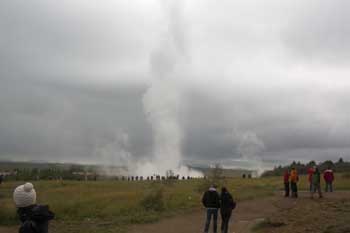
If you have one night or a few nights you are better off taking a bus or renting a car directly from the airport and heading east along the southern coast for some of the country’s best sights. If you have at least a week you’ll want to rent a car and do a lap around Iceland’s famous Ring Road, allowing you to see nearly everything the country has to offer in a neat and organized way.
Iceland accommodation: Hostels, guesthouses, and hotels
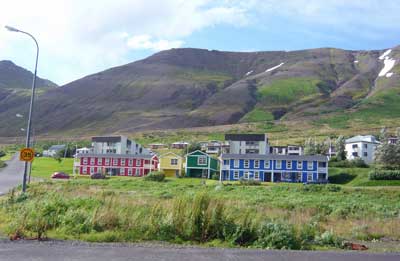
The most common form of accommodation in Iceland is a guesthouse and hostel combination which will have a mix of private rooms and dorm rooms, with shared bathrooms in down the hall. Most of them have fully equipped shared kitchens, so self-catering is at least as popular as eating out while exploring Iceland outside of Reykjavik.
High season (June through August) typical accommodation prices
All prices quoted in US dollars at a rate of about 110 Krona to US$1 in December, 2016.
- Hostel dorm bed: US$34 to US$58
- Single private with shared bathroom: US$85 to US$135
- Double private with shared bathroom: US$118 to US$140
- Double private with en-suite: US$130 to US$320 (and up)
Prices in Reykjavik are a bit higher than elsewhere in the country, but not by much. Prices in the off season are about 30% lower than in high season, but in the slowest months many places close so rates never go much lower than this.
Most Iceland guesthouses are NOT on the normal hotel-booking sites
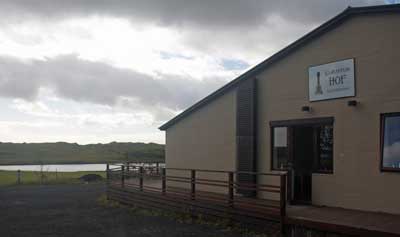
The good news is that when you get to Iceland, the tourism office will give you a directory of almost every guesthouse on the island, and there are other ways of finding these guesthouses and other informal accommodations. Even as of late 2016 you should be able to book a double room (with shared bathroom) for about US$120 per night in most towns in Iceland. If you do a hotel search you might see prices that are double that, but those are in the few formal hotels with 24-hour lobbies and such.
Increasingly, Airbnb and other online rental sites are the best place to find guesthouse accommodation in Iceland. As of only a few years ago, most places would be booked by phone or in person on arrival day, but now more and more places can be pre-booked, at reasonable prices.
Sleeping bag accommodation in Iceland
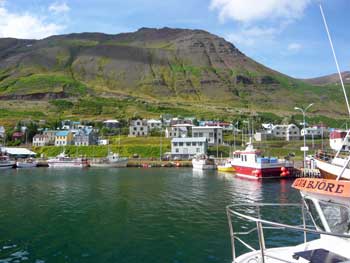
In a ‘sleeping bag accommodation’ (as it’s known in Iceland) you’ll get a bed with a mattress and often a pillow. So with even a cheap indoor sleeping bag, you’ll be comfortable and warm while saving quite a bit of money. For those renting cars, this is a highly recommended strategy.
You can rent sleeping bags in Reykjavik starting at around €12 per week.
Most Iceland attractions are free (the good news)
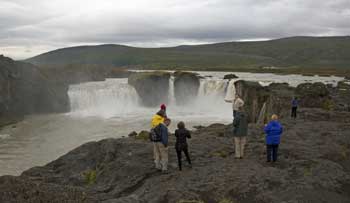
So to see all the glaciers and waterfalls and volcanic beds and other scenic attractions, it’s all free of charge with no admission cost or even parking fees. The larger attractions also have visitor centers where you can get local advice for free as well.
Iceland transportation: Rental cars and buses
Even as a lifetime public transportation fan, I’m very glad I gave in and rented a car to tour Iceland, even as a solo traveler. For the most part the roads are in perfect condition and virtually empty even in high season, so driving couldn’t be easier. Also, the country has stunning vistas every time you turn a corner, so being able to stop in the middle of the road even if there is no room to pullover, is critical.
The buses are modern but also expensive and running on very limited schedules. If you only have enough time to cover the main sights along the southern coast you might buy one of the bus passports that allows you to hop on and hop off, though a rental car is still much better and easier.
Rental cars in Iceland: What you need to know
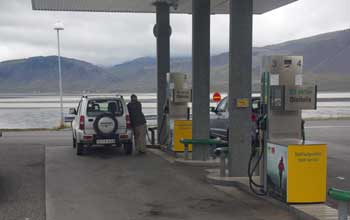
For an extra fee you can pay to reduce that deductible to almost nothing, but the more popular add-on is the Gravel and Glass insurance. For around €10 per day with this coverage you have a zero deductible if the vehicle gets damaged by gravel or if any glass gets broken by flying rocks (or anything else). Unfortunately, many of Iceland’s side roads and even a few of the main roads are covered in gravel, and if you drive at anything above a crawl, there will be some gravel flying around.
Personally, I normally decline add-ons like this but in this case I bought the Gravel coverage after reading a few horror stories in online reviews. I didn’t get any damage that I’m aware of, but the peace of mind was worth a LOT when driving on isolated gravel roads so I wasn’t petrified that I was chewing up the paint job just trying to stay safe on the roads.
Rental cars in Iceland
- 2-wheel drive compact (manual): US$230 per week and up plus add-ons
- 2-wheel drive compact (automatic): US$270 per week and up plus add-ons
- 2-wheel drive mid-size: US$450 per week and up plus add-ons
- 4-wheel drive van or SUV (automatic): US$650 per week and up plus add-ons
Daily rates are about 20% as much as weekly rates, so 5, 6, or 7 days cost the same.
Add-ons
Gravel coverage: US$10/day
GPS (highly recommended): US$10/day
Additional collision waiver: US$10/day
Fuel prices in Iceland
Every gas station in the country has the same prices, which don’t seem to change much. As of December 2016, a liter of petrol is 194 Krona, which is about US$1.75 or €1.63, or about US$7.50 per gallon.
Bus pass prices in Iceland
For a quick day trip from the airport to some local sights you can spend as little as US$90 per person, but for the longer distance buses you’ll spend at least US$130 to US$250 depending on length of time in order to hop on and hop off.
A Ring Road passport will cost around US$400 per person, so for two people it’s no cheaper than renting a car, even after fuel is taken into account, and for 3 or 4 people it’s definitely cheaper renting a car.
Food prices in Iceland
Here’s the thing: sit-down restaurants in Iceland are very expensive by international standards, so there aren’t very many of them. Obviously Reykjavik has many restaurant choices but most smaller towns might have only a few at most. The good news for budget travelers is that fast-food options are more plentiful, and self-catering is even cheaper and easier.
Restaurant prices in Iceland
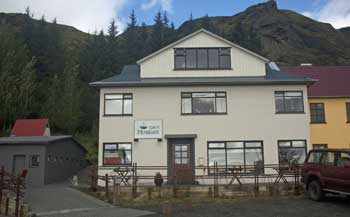
A soft drink, coffee, tea, or even bottled water will generally be between US$3 and US$5 in a restaurant. A pint of beer will typically start at around US$7 at even the cheapest places, while wine and spirits cost even more.
Fast food prices in Iceland
In Reykjavik and larger towns (which might only have 2,000 residents) you’ll have many fast food options including Subway, Quiznos, and usually a few local burger or hot dog places. Prices for a sandwich at Subway are about US$6 for a 6-inch and US$10 for a foot-long, so they aren’t too much higher than elsewhere in Europe, and are sure cheaper than proper restaurants.
More good news for drivers is that many gas stations around the country have fast food restaurants built in, so it’s fast and easy to pick up a sandwich or hot dog by the side of the road.
Hotel breakfast prices in Iceland
Many hotels and guesthouses in Iceland serve breakfast, but it’s almost always at an extra fee, and many don’t serve anything at all. If a breakfast is offered it will typically cost between US$12 and US$15 for a buffet of cereals, bread, cold cuts, cheeses, hard boiled eggs, juices, coffee and tea, and perhaps some pastries.
Making your own self-catering breakfast will be cheaper, but since you can stuff yourself for a flat fee at the breakfast buffets it might be worth it to save yourself the hassle of shopping the day before and making breakfast in the morning.
Self-catering in Iceland
The best budget tip for Iceland is to buy and prepare your own food, and you can literally do it for all three meals per day if you prefer. Since Iceland has almost no national “must-try” dishes, you can buy and prepare your own food without worry about missing anything meaningful.
Nearly every guesthouse in Iceland has a shared kitchen where at least half the guests will be storing and preparing breakfasts and even dinners. They have refrigerators, coffee makers, electric kettles, pots, pans, dishes, and silverware, as well as salt and other spices, so you can buy just the food and you’ll be able to prepare it all.
Supermarket prices in Iceland
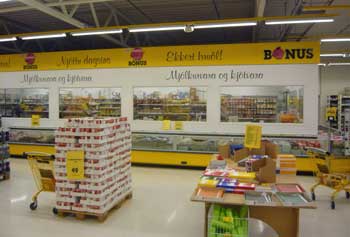
For example, you can buy a 400 gram (1 pound) block of Havarti cheese for around US$5, but a similar looking cheese right next to it on the shelf might be US$15 for the same amount. The same is true for lunch meats. Sliced ham can be US$3 for enough to make 2 sandwiches, but sliced roast beef might be US$10 for the same amount.
Some sample prices in the cheaper Iceland supermarkets
- Sliced white bread: US$1.70 per large loaf
- Fresh baguette: US$1.50 to US$2 each
- Hot dog buns: US$2.50 for 5
- Pork hot dogs: US$3.50 for 5 large hot dogs
- Cheap Havarti or other local cheese: US$5 for 400 grams (1 pound)
- Imported cheese: US$10 to 15 for 400 grams (1 pound)
- Sliced ham for sandwiches: US$5 for 400 grams (1 pound)
- Sliced roast beef for sandwiches: US$12 for 400 grams (1 pound)
- Pasta: US$1.50 for .5 kilogram (1.1 pounds)
- Pasta sauce: US$3 for a .5 liter jar
- Ground beef: US$5 for .25 kilos (half pound)
- Bake-at-home pizza: US$5 to US$7 for one person
- Bag of tortilla chips for 2 or 3 people: US$2
- Jar of salsa for those chips: US$3
- Breakfast cereal: US$3 to US$5 per box
The prices above are for many of the cheaper and more common things that budget tourists buy in Iceland. As mentioned above, if you want something exotic and imported, it might cost double or triple what you pay at home, if you can find it at all.
Alcohol prices in Iceland
In restaurants and bars throughout the country you’ll pay at least US$8 for a pint of beer, and at least US$10 for a glass of wine or a simple cocktail. If it’s a fancy place you’ll pay even more, of course.
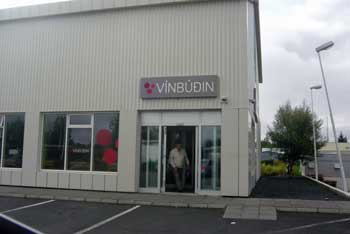
Here are some typical prices for alcohol:
- 330ml can of local beer: US$2 to US$3
- 500ml can of local beer: US$2.50 to US$4
- Cheapest bottle of wine: US$10 to US$12
- .7L bottle of off-brand vodka: US$30
- .7L bottle of mid-level brand vodka: US$50
Bottom line on doing Iceland as cheaply as possible
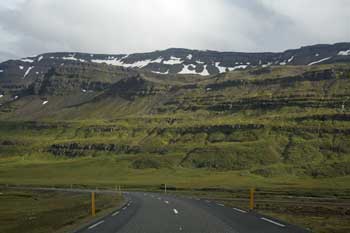
Whether you are going to get dorm beds or private rooms, as long as you will have your own wheels it’s worth renting a sleeping bag. You get the same bed and same services for about US$10 less per night, which will pay for a week’s rental of an indoor sleeping bag.
Unless you are a terrible driver or afraid to drive, it’s highly recommended to rent a car instead of trying to get around using buses. Once you get there you’ll see that having 100% flexibility with a car compared to almost no flexibility with a bus, is worth a LOT.
Instead of trying to be cheap with transportation, be cheap with self catering food and drinks for yourself. If you have at least a small group of people you’ll be able to have a party each evening in or near the shared kitchen of your guesthouse, and it will be more lively than any restaurant in town.

Thank you for your response. I am downloading the app as I am writing to you.
Would you happen to have some figures as to the cost of the places around Ring Road?
I want to mention my trip will be from a Wednesday to the following Saturday. I’d like to stay around the city on the weekend and take advantage of the night life and meeting people. Do you think starting on the upcoming Monday for Ring Road and being back in Reyk on Friday would be sufficient? Or should I change that plan? I would like to meet locals and travelers alike.
Where you ever concerned about not reaching a gas station around Ring Road?
Hornstrandir National Park look nice in the pictures I am seeing, but that is very far north. Do you know anything about this place?
Thanks again and I look forward to hearing from you.
-Alexander
I am super happy I found this before I made any permanent decisions. You have me second guessing my original plans. I would like to ask a few questions and get your guidance.
I am going to Iceland in September for 11 days. My original plan (still viable) is to stay at a cheap hostel in Reyk. I can stay there virtually for free. Does it makes sense for me to do the sleeping bag accommodations if that is the case? Or can I have my ‘base of operations’ be in Reyk and just drive to the places I want to go?
I would also love to get your recommendations on where to go and what to see. I want to do some of the more touristy attractions, but I would love to hear some off the beaten path places you absolutely loved.
Thank you for your time!
-Alexander
Alexander,
This is a tricky situation because Iceland can be quite expensive and it must be very tempting to stay for almost free in Reykjavik. From Reykjavik you are able to visit maybe 20% of Iceland on day trips, but because it’s the most densely populated area those places are all the most crowded as well. Since you’ve got 11 days I would highly recommend trying to do the Ring Road for 7 or 8 of those days. I did it solo starting in late August a few years ago and it is probably my favorite travel experience ever (and I’ve been almost everywhere). The other 80% or so of Iceland that ISN’T within reach of Reykjavik feels even more magical because there are so few visitors.
The peak travel season is June through late August, so by September you should be able to find plenty of availability at the more affordable guesthouses in the small towns around the Ring Road. It’s not cheap, but it’s definitely worth it. Also, as mentioned in the article, once you have your vehicle and fuel and your places to sleep, the rest can be pretty cheap. Almost all of the attractions are free to enter and even free to park. And since the Icelandic food isn’t very good or very special you can buy groceries at supermarkets and have picnic lunches and prepare meals in the guesthouses for breakfast and dinner.
I rented a sleeping bag in Reykjavik but I think I only used it 2 times on the Ring Road as many of the guesthouses provided linens at no extra charge. It’s worth looking into that to see whether it might be worth it.
Reykjavik is a pretty cool city, but I wouldn’t want to spend more than a few days there. Imagine a huge and amazing national park (like Yellowstone) with a big town just outside the gates. Reykjavik is like that big town and when you get there you’ll want to spend most of your time in the park itself.
As for specific things to see, it’s also a bit tricky because Icelandic names are long and almost impossible to remember. I downloaded the Iceland Travel Guide from Lonely Planet onto my iPad and I followed their suggestions as I drove around the island. I found it extremely accurate and helpful, and I mostly made my plan as I went because I was never too sure how far I’d be able to drive in a given day. Especially outside of Reykjavik, there are no crowds so it’s super easy to just pull into any waterfall viewing area along the way and stay as long as you like. I hope this helps and let me know if you have any other questions. -Roger
Hi Roger,
I am excited to see Iceland in few weeks from now. I will be going with hubby for the first time. I’ve booked our trip thru a Canadian travel agency. My question is how the Northern lights hunt is usually being done. Based on most info regarding this particular tour, it has been clearly stated that toilets won’t be available in the area, bring your own drinks & snacks, warm and extra clothing is required to keep warm & so forth but there was no mention if there will be chairs or able to sit anywhere while in wait of the NL. Also how long will this northern lights tour last, an hour, 2 hrs or depends on how long the NL remain visible?
I appreciate your kind reply. Thank you!
Lori,
I really wish I could help you with this, but I can’t. I’ve only been to Iceland during the summer. I’ve heard good things about these Northern Lights tours, but I’ve yet to do one myself so I can’t offer and insight. Best of luck elsewhere. -Roger
Thank you Roger for the feedback. Will let you know if I have any other questions.
Hi Roger, Amazing website and extremely comprehensive. My mother and I are planning to visit Iceland from September 29 to October 7, 2019 i.e. we will be staying for 8 nights/9 days in Reykjavik. We would like to be based in Reykjavik and join day tours from there to explore the countryside and sights around the capital. I understand there will be a lot of driving but let us know if the sites we’ve planned are doable according to our current accommodation plans:
1. We want to take the Northern Lights Tour
2. Golden Circle
3. Southern Iceland Tour
4. Jökulsárlón Glacier Lagoon Day Tour
5. The Snæfellsnes Peninsula
6. Landmannalaugar Hike/Trail Tour
7. Whale Watching Tours/ Puffin Watching Boat Tour
8. Myrdalsjokull Glacier Ice Cave Tour
One reason we don’t want to keep moving from hotel to hotel or guesthouse to guesthouse is that we’ll have luggage; and my mother will find that to be very exhausting. Let us know your feedback/comments. If you feel we’ve missed something as part of our current itinerary, do let us know.
Also, how easy is it to book day tours etc. after reaching Iceland? Do the hotels normally help with this?
Thank you so much, Kritika
Kritika,
I’m very happy to hear that people find this information to be useful. You might have expected this initial response, but I highly recommend spending as much time as possible NOT staying in Reykjavik. In almost any other European country you can stay in the largest city to make day trips and you get the best of both worlds (big city services and nature sightseeing). But Iceland is very different in that Reykjavik really isn’t very interesting or charming at all, it’s very expensive, and it will be a big hassle getting in and out of the city each day. Whether you rent a car (highly recommended) or do bus tours, you’ll spend the first and last driving hour of each day in the city and in the suburbs. In Iceland, the scenery and nature of the entire rest of the island is the main reason to go.
Packing from a car into a big hotel for a night and then back into a car again can be a hassle as well, but in Iceland you’ll be staying in small guesthouses where you can park 30 steps from the front door most of the time, and then walk 10 or 20 more steps to your room. They are mostly in quiet neighborhoods with plenty of nearby parking. At the very least I’d recommend staying in Vik and Hofn along the south coast in order to do your own southern tour and visit the Myrdalsjokull Glacier Ice Cave.
The Snæfellsnes Peninsula is really lovely and it’s almost uninhabited, which adds to the charm. But it’s about 2.5 hours each way from Reykjavik, so 5 hours of that day would just be going back and forth on the same road.
Another option if you are driving would be to spend many of those Reykjavik days at a hotel more in the suburbs so you don’t spend so much time going in and out of the city center and you’d find free parking and cheaper hotels as well. Honestly, if you flew into Reykjavik and spent two days there and then flew out, you’d have a good time and you’d find it a nice enough place. But if you spent two days in Reykjavik and then two more days touring the southern coast of the island, you’d regret not spending 3.5 days touring the southern coast. The Golden Circle is a nice set of things to see if you are only in Iceland for 12 hours on a layover, but they are also crowded attractions that were probably the most disappointing of my 7-day trip around the Ring Road.
If you still prefer to focus on Reykjavik I’m sure you’ll have a good time and you have chosen a great sampling of places to see that are more or less reachable in a day. I’m not sure if I’ve been helpful or just come off as nagging you, so I hope it seems helpful. Let me know if you have any other questions. -Roger